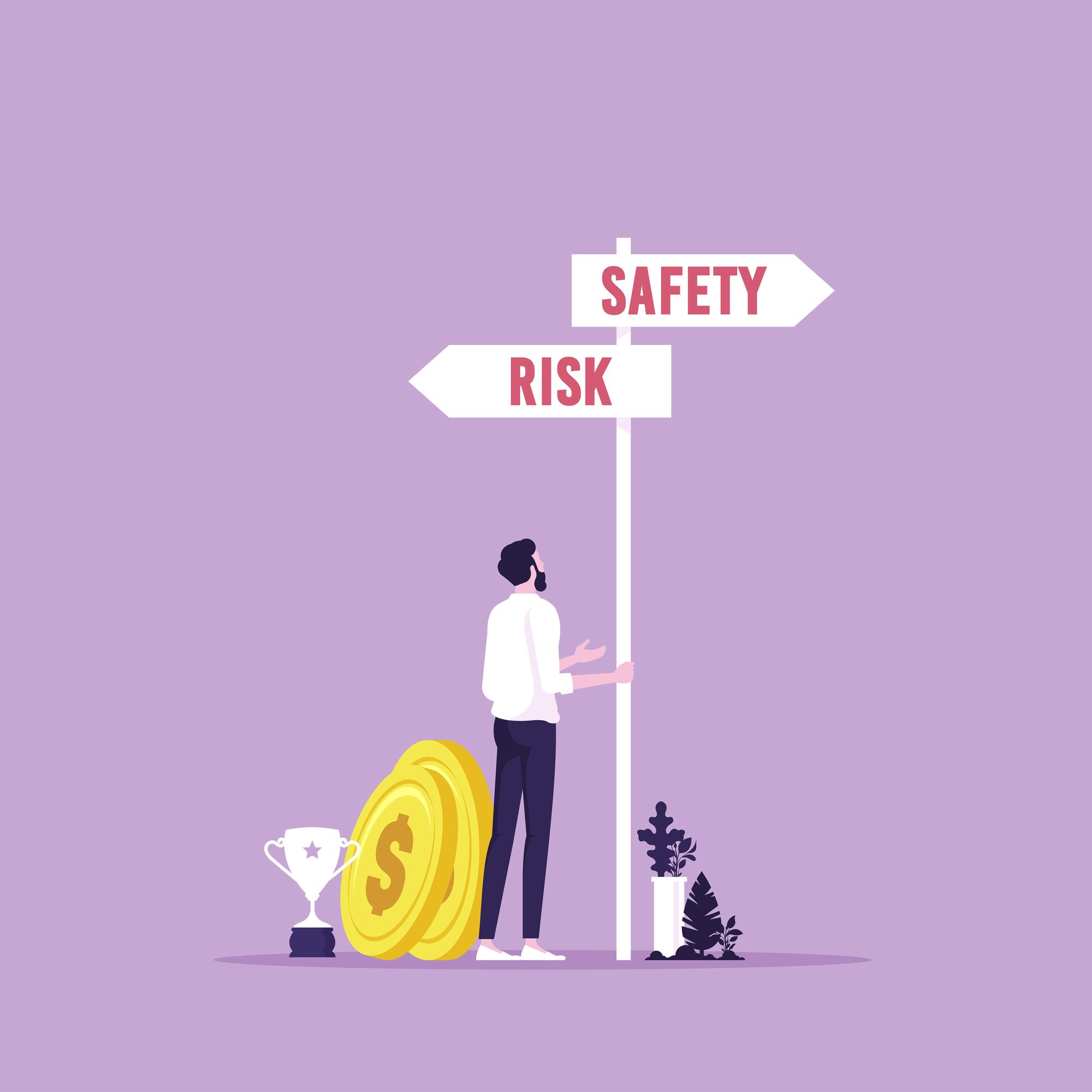Risk Management in Cryptocurrency: Tips & Tricks
Understanding the numerous risks associated with the cryptocurrency market is critical to building a well-balanced portfolio. However, it is crucial to realize that you cannot totally eliminate the risk associated with cryptocurrencies, as human errors and other factors can also be risked.

Investments in cryptocurrencies are highly profitable but with a high level of volatility and speculations. As a result of its speculative nature, there are tendencies of loss of both capital and profits. Therefore, it is best to approach cryptocurrencies with caution to ensure the lowest investment rate with the lowest risk. Hence, it is essential to know the risk associated with cryptocurrency and how they can be managed.
Consequently, crypto newbies lose a large percentage of their crypto portfolio within the first few months of their cryptocurrency journey. However, this loss is primarily due to a lack of risk appetite and a risk management culture rather than poor cryptocurrency knowledge.
What is Risk Management?
Risk management is the process of defining the parameters for how risk will be maintained throughout a trade. It is one of the essential factors in gaining a competitive advantage.
Risk management is essential to any trader's success in any market. Although losses are unavoidable no matter how much money you have to trade or invest with, especially in a highly volatile cryptocurrency market. However, it is critical to learn how to manage risk –since it can't be eradicated entirely– to the barest minimum to reduce losses. So, to maximize profits, risk management must be mastered. After all, the more significant the risk, the greater the potential gain.
Risk management is crucial because it enables users to identify potential dangers and be well-prepared to address them. Once the threat is recognized, it is simpler to manage it. Risk management also gives them the groundwork necessary to choose wisely, save money and safeguard their future.
Risk Associated with Cryptocurrency
Extreme Volatility
The cryptocurrency market is volatile. The price movements are significant, and the continuous rise and fall of prices cannot be avoided in the market trend. In fact, the variations cannot be explained accurately. However, knowing asset prices adapt to changing trends –these trends determine the market situations. Therefore, it is critical to understand their difference to make good decisions for your portfolio, as any wrong timing in the cryptocurrency market is highly risky. Hence, this unpredictability makes people reluctant to invest in cryptocurrencies.
Not Regulated
A risk associated with cryptocurrencies is the decentralized nature of the blockchain, which has no central banking from a financial institution or the government regulating its activities. This means the network's users will decide what will happen to the investor's money. Contrary to financial markets, which are backed by a regulatory body that constantly works to protect investors' interests and safety, cryptocurrency is entirely decentralized, and the network participants oversee it.
Highly Vulnerable to Cyber Fraud and Attack
Scammers and hackers have been interested in cryptocurrencies due to their growing popularity and the multiple opportunities they provide investors. Unfortunately, consumers are susceptible to fraud even though the blockchain is incredibly safe and well-encrypted. Additionally, because you are in charge of your wallet and your assets, you risk being targeted by fraudsters looking for easy targets. As a result, your ability to prevent cryptocurrency asset theft depends on the quality of your device security systems and that offered by other third parties.
Non-reversible transactions
Transactions involving cryptocurrencies are instant and only take a few seconds. However, after a transaction has been finished, it cannot be undone unless the recipient is ready to send it again. The anonymity of the identities dramatically increases the likelihood of irreversibility.
Market Risk
Risks resulting from market volatility can affect crypto assets. Since cryptocurrency trades only when there is a demand, the market risks are unique. Due to its restricted or lack of adequate supply, the crypto asset may experience problems with liquidity. In addition, it may be subject to market manipulation due to the limited number of people that hodl it. Systematic and unsystematic risks are common types of market risk. Systematic affects all the cryptocurrencies in the market, while unsystematic is only peculiar to a crypto asset when there is a change in the company's whitepaper.
Tips and Tricks For Managing The Risk:

Do Your Own Research (DYOR)
Understanding how the market functions are the greatest method of learning the risk management system in cryptocurrency. This means before you commit your funds to any crypto asset, you do your research and be convinced of the potential of your asset choice. However, it is also essential to use an amount you can avoid losing as the market is unpredictable.
Diversify Your Portfolio
A well-diversified portfolio spreads the investment among many coins, lessening the volatility's impact. You can reduce risks by spreading your money over multiple assets while raising your potential gains. In reality, diversification is spreading your risk among your assets, minimizing your chances of losing everything, and controlling your emotions. Its primary purpose is to limit the likelihood of total capital loss. This is a reasonably standard risk management strategy.
Define Entry/Exit Strategies
One of the most critical components of your risk management methods is knowing when to buy and sell your crypto asset. You can profitably make gains and avoid losses when you enter the market ideally and exit profitably (you buy high and sell low). This approach to risk management is practical.
Know Your Risk-to-Reward Ratio
One key risk management strategy to master is a risk-to-reward ratio. It provides a mathematical breakdown of your asset and the potential return on investment for each unit of crypto asset you stake. The risk-to-reward ratio accurately represents how much of your money you are willing to risk. Never, however, should you employ more than 50% of your whole portfolio.
The Takeaway
Understanding the numerous risks associated with the cryptocurrency market is critical to building a well-balanced portfolio. However, it is crucial to realize that you cannot totally eliminate the risk associated with cryptocurrencies, as human errors and other factors can also be risks.
Ensure to check the Cwallet Blog daily for articles that help you understand cryptocurrency and blockchain technology tenets. Join us on telegram for more information.
What's more?
Cwallet does not charge any deposits, withdrawals, and token swap fees. Therefore, using Cwallet is absolutely FREE!
So, what are you waiting for?
Download Cwallet NOW.